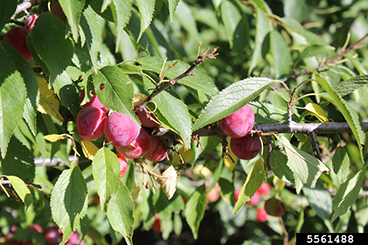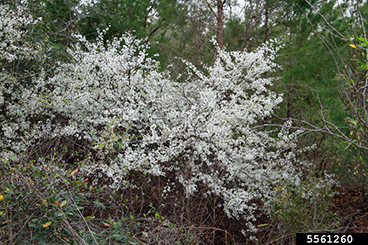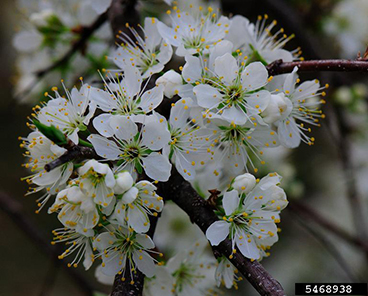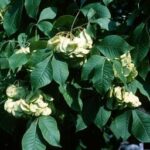Description
Wild Plum, Prunus americana
TREEPOT – 5″ x 5″ x 14″
Light: Full sun, part shade
Moisture: Medium
Soil: Moist, well-drained
Height: 15–35 ft.
Bloom Season: April, May
Bloom Color: White to pink
Fruit: Red
Notes: American plum is a small, understory tree with showy, white flowers (5–petals) in clusters that bloom before the leaves emerge in spring. The plums that ripen in August/September are about an inch in diameter, with red skins and yellow flesh.
The short, crooked trunk of this tree, with scaly, black bark, supports a graceful, open crown. The elongate leaves are alternate, 2–4 inches long, turning yellow to orangy-red in fall. The branches/twigs are an attractive dark reddish-brown, but do have thorns. With roots that are shallow and widely spread, American Plum can be used for erosion control and bank stabilization, spreading by sprouts. This tree will tolerate several days of flooding.
The sour and sweet plums can be eaten fresh, but more often made into jam/jellies or dried. Or leave the fruit on your tree, and the wildlife will love it! The plums are consumed by deer, small mammals, and many birds including grouse and quail. Deer will graze the twigs and leaves. American plum also provides valuable nesting cover and is host to many butterflies and insect pollinators. An early bloomer, it is an important food source for native bees and honey bees in early spring.
Photo credits:
1. Whitney Cranshaw, Colorado State University
2. James R. Holland
3. Vern Wilkins, Indiana University
(all from Bugwood.org)




